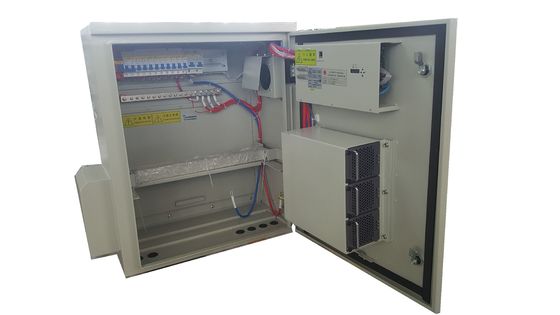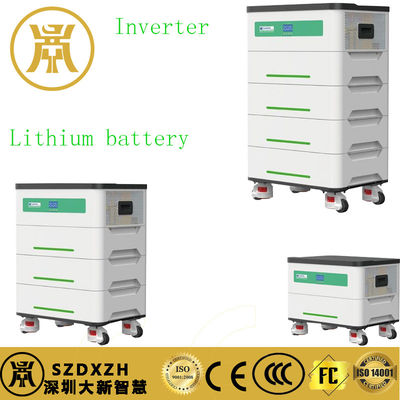Working mode and control logic of base station hybrid energy system
1. Off-grid PV System
Operation priority: photovoltaic power generation → photovoltaic storage synergy → pure battery power supply
Adaptive MPPT algorithm is used to achieve maximum power point tracking, and photovoltaic direct supply is prioritized when irradiance ≥ 200W/m²
Dynamic current distribution strategy is implemented in the photovoltaic storage synergy stage, and the charging/discharging curve is adjusted according to the SOC state
The battery management system (BMS) integrates a three-level protection mechanism: SOC<25% current limiting power supply, <15% execution safety shutdown
Advantages: zero emission operation, suitable for scenarios without mains access

2. Hybrid PV-DG System)
Energy dispatch logic: PV → PV + energy storage → diesel generator
Set dual threshold trigger mechanism: start pre-alarm when SOC≤25%, activate diesel generator set when ≤20%
Rectifier module is equipped with automatic voltage compensation (AVC) function to ensure that the output voltage is stable at ±2% when the diesel engine is powered
Configure intelligent start-stop controller to meet the requirements of 30 seconds cold start/10 seconds hot start
Advantages: power supply reliability ≥99.5%, suitable for periodic power outage areas
3. Multi-source complementary power supply system (Grid-PV-DG Hybrid System)
Power supply priority: PV> mains> energy storage> diesel generator
Introduce dual power automatic switching device (ATS), mains interruption response time ≤50ms
Intelligent energy router realizes dynamic balance of three-source power and supports real-time power compensation of ±5%
Configure N+1 redundant rectifier module, automatically switch to backup unit when single module fails
Advantages: comprehensive energy efficiency ≥92%, with seamless switching capability
All systems are equipped with SCADA monitoring platform, supporting remote parameter configuration and fault diagnosis. The three modes can be flexibly configured according to the base station load characteristics (average daily power consumption 10-50kWh), supporting smooth transition and upgrade.
Shenzhen Daxin Intelligent Equipment Technology Co., Ltd
DaXin Smart Equipment is a professional manufacturer of UPS uninterruptible power supply, backup power equipment, communication 5G micro station power supply, DC remote supply, integrated outdoor cabinets, ETC outdoor cabinets, energy storage system integration, integrated data rooms and their key infrastructure (48V lithium iron batteries, storage batteries, precision distribution, precision air conditioning, network server cabinets, machine room power environment monitoring)

 Your message must be between 20-3,000 characters!
Your message must be between 20-3,000 characters! Please check your E-mail!
Please check your E-mail!  Your message must be between 20-3,000 characters!
Your message must be between 20-3,000 characters! Please check your E-mail!
Please check your E-mail! 











